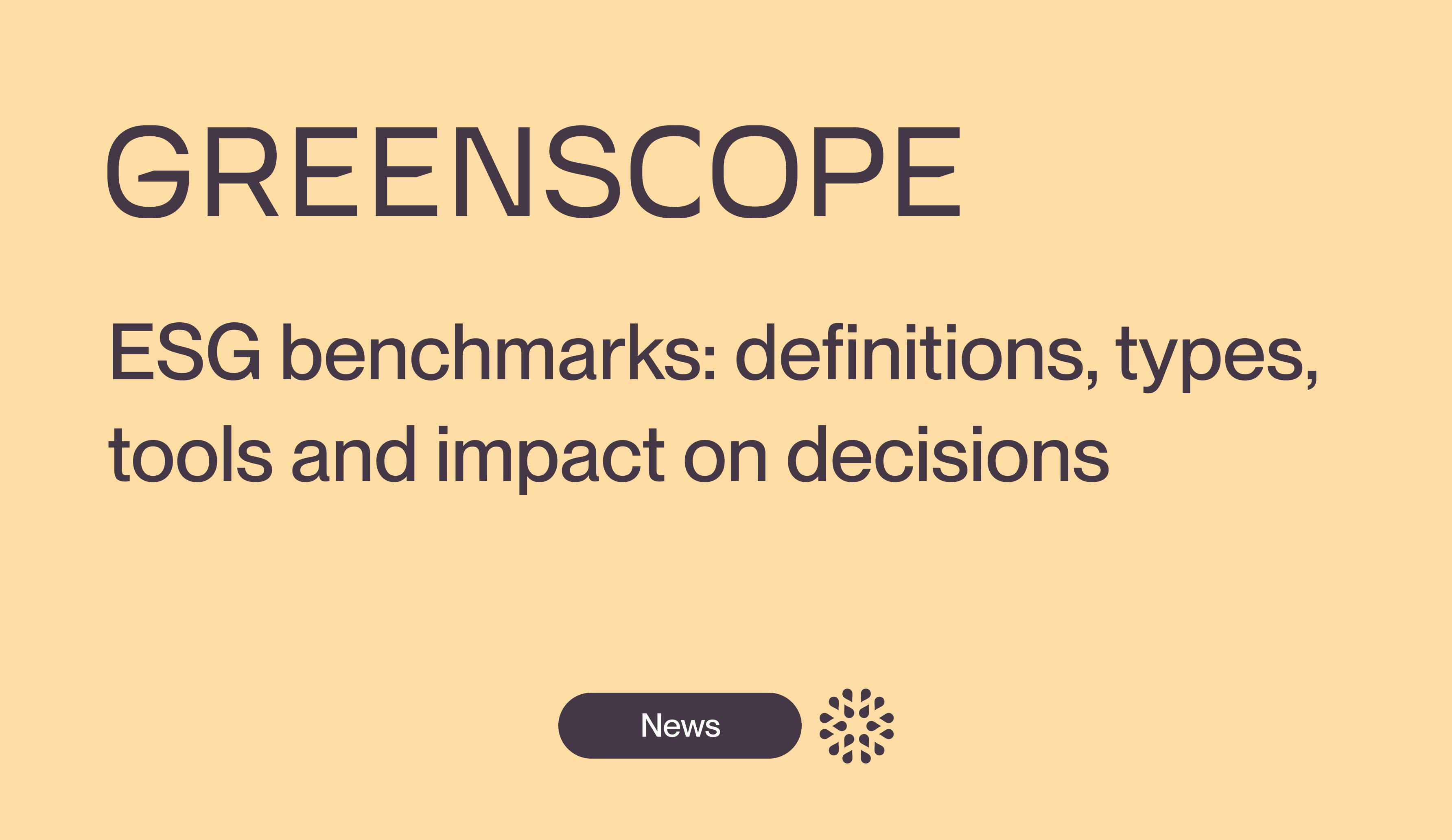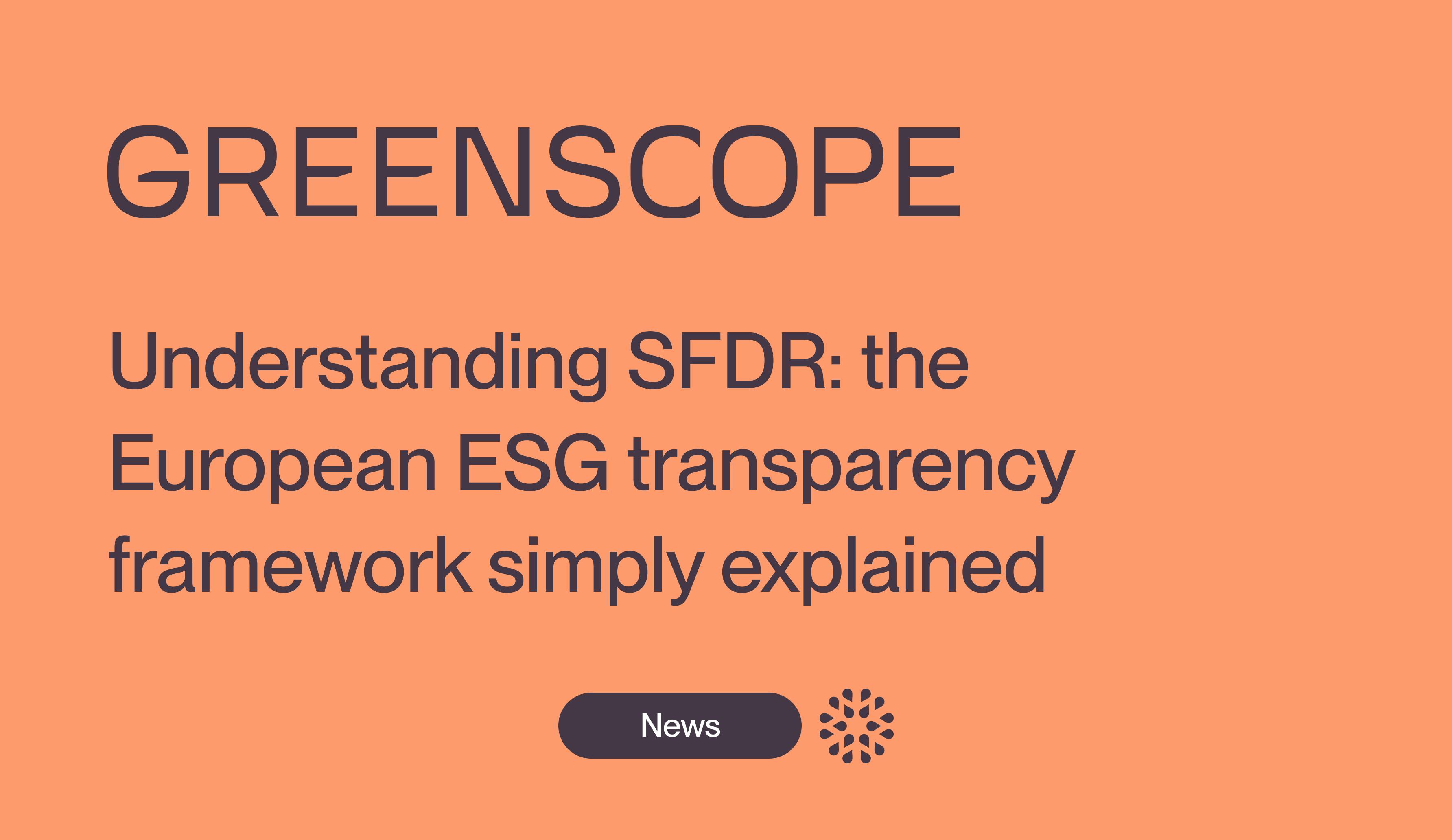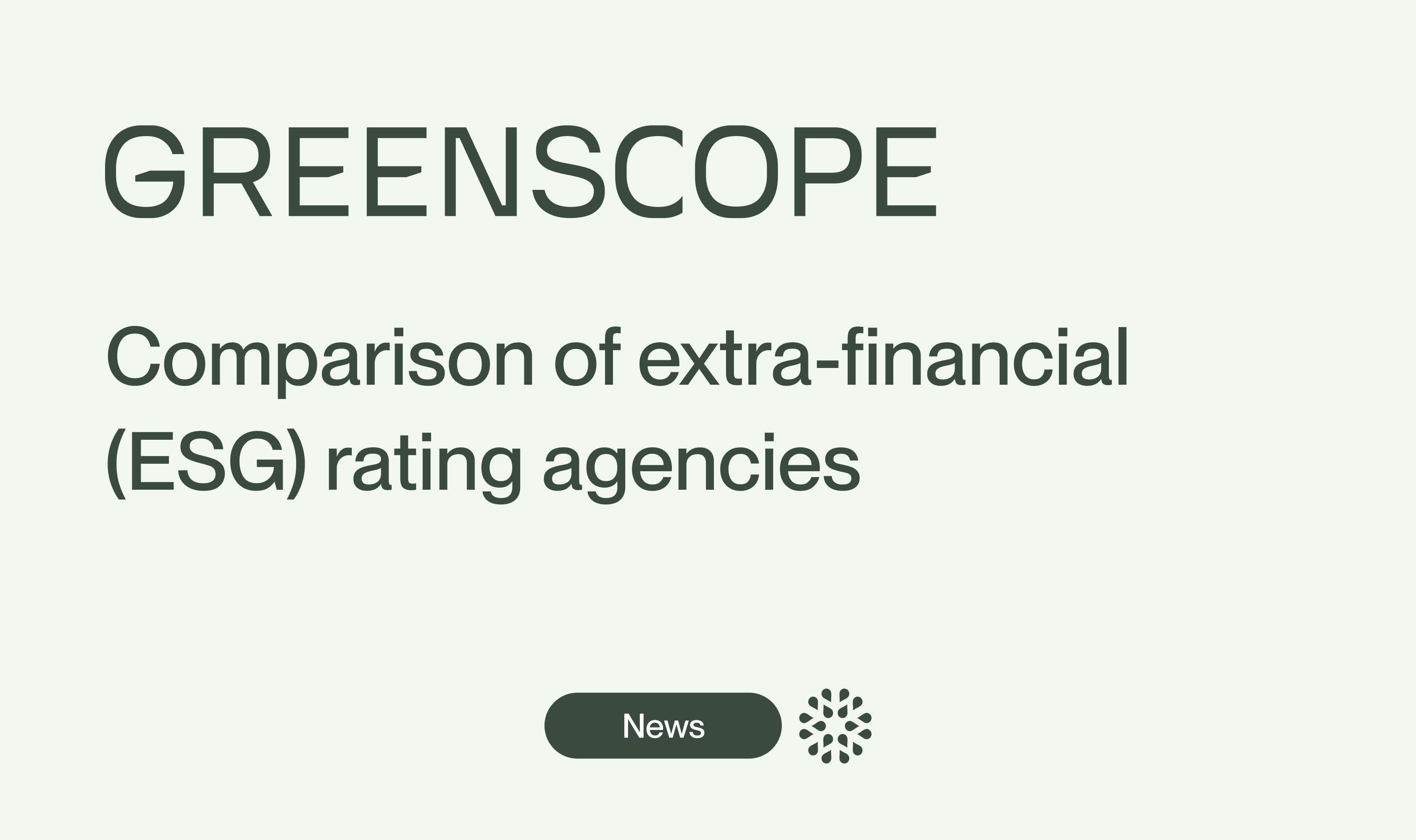ESG Benchmark: definitions, types, tools, and impact on decision-making
See where you stand among your peers: explore how ESG benchmarking strengthens your decisions and commitments.

When collecting your ESG data, an inevitable question arises: where do we stand compared to our peers? Collecting your own ESG data and calculating your indicators is a prerequisite for effectively managing your CSR strategy, but it's even more useful to be able to measure yourself against similar companies—by sector, size, or geographic area.
This is where ESG benchmarking comes in, a key tool for evaluating the maturity of your practices and identifying concrete areas for progress.
But how can you access reliable, comparable data without multiplying sources and tools?
In this article, we explore why ESG benchmarking has become a strategic lever for driving sustainable performance, and how an integrated solution can effectively meet companies’ needs.
What is an ESG benchmark?
An ESG benchmark is a comparison tool that allows a company to assess its Environmental, Social, and Governance (ESG) performance against external standards. Concretely, it means comparing your own ESG indicators to those of a panel of similar companies: from the same sector, of similar size, operating in a comparable geographic area, or subject to the same regulatory requirements.
The goal is not only to position yourself on a performance scale, but above all to better understand where your company stands, identify its strengths and areas for improvement, and adjust its ESG strategy accordingly.
There are several types of ESG benchmarks, depending on the data sources used, the level of desired granularity, and the comparison objective (overall positioning, sectoral assessment, regulatory compliance, etc.).
The different types of ESG benchmarks
Sectoral benchmarks
Objective: compare yourself to companies in the same industry to identify ESG best practices specific to your field.
Benchmark name | Description | Type of data |
|---|---|---|
GRESB | Assesses ESG performance of real estate assets and infrastructure. | Data collected directly from participants. |
CDP (Carbon Disclosure Project) | Provides sectoral comparisons on greenhouse gas emissions, water management, and deforestation. | Self-reported company data. |
EcoVadis | Platform used in supply chains to compare suppliers' ESG practices. | Sectoral scores based on standardized questionnaires. |
SBTi benchmarking data | Provides sectoral references for emission trajectories aligned with climate goals. | Scientific and sector-specific data. |
ESG index benchmarks
Objective: assess your overall performance compared to reference ESG indices used in financial markets.
Index name | Description | Scope |
|---|---|---|
MSCI ESG Indexes | Ranks companies according to ESG criteria and offers various indices by sector, country, or theme. | Global |
Dow Jones Sustainability Index (DJSI) | Selects ESG leaders in each sector, based on a very detailed questionnaire. | Global |
FTSE4Good Index Series | Assesses the ESG compliance of listed companies, with ethical, environmental, and social criteria. | Global |
Bloomberg ESG Disclosure Score | Measures the level of ESG transparency of companies in public reports. | Global, investor-oriented |
Competitive benchmarks
Objective: directly compare yourself to one or more identified competitors to measure ESG performance gaps.
Example solution | Description | Data used |
|---|---|---|
Sustainalytics Peer Comparison | Provides comparisons between a company and its listed competitors. | Public, listed ESG scores. |
RepRisk | Analyzes a company’s ESG risks and reputation, enabling direct comparison between players. | Data sourced from public sources and media. |
ESG SaaS platforms with integrated benchmarking (e.g.: Greenscope, Enablon, etc.) | Integrate anonymized user data to generate personalized benchmarks with peers or competitors. | Aggregated internal data. |
Why do ESG benchmarking?
First, carrying out an ESG benchmark allows a company to identify the best practices in the market or their sector, and thus adjust its commitments, prioritize its actions, and refine its ESG roadmap. This relative positioning also makes it easier to adopt more relevant indicators and to spot gaps where additional efforts are needed. In short, it serves to improve your ESG performance.
ESG benchmarking also plays a central role in financial decision-making. From an investor perspective, it helps identify the top-performing companies in terms of sustainability, regulatory compliance, and long-term resilience. A company well positioned compared to its peers enjoys greater financial attractiveness, both in terms of reputation and market valuation. In a context where ESG criteria increasingly influence investment decisions, a good comparative ESG score becomes a strategic advantage.
On the risk management side, benchmarking helps anticipate ESG risks by revealing areas of underperformance or discrepancies against sectoral or regulatory standards. It thus becomes an early warning tool, especially useful for addressing emerging climate, social, or governance issues.
Finally, after the data collection phase, benchmarking can also fill any gaps through sectoral or geographic proxies. This allows you to maintain consistency in your analyses, even when data is missing or incomplete, while still ensuring a robust and contextualized ESG assessment.
In short, ESG benchmarking is essential for moving from descriptive reporting to strategic management of sustainable performance, serving your company’s transformation.
How does ESG benchmarking impact investment decision-making?
In the context of responsible investment, ESG benchmarking plays a key role by informing the extra-financial due diligence process. For investors, it’s no longer just about analyzing financial statements, but about deeply evaluating a company’s ability to manage ESG issues and generate long-term sustainable performance. For more details, read our article on ESG investing. ESG benchmarks come into play at several key stages in the process:
- Comparative analysis: benchmarking positions a company against its peers, within the same sector or geographic area. It highlights ESG leaders and laggards, making the initial sorting of potential investments easier.
- Risk assessment: by identifying discrepancies with market practices, benchmarking helps detect ESG vulnerability zones (lack of governance, poor emissions management, weak social engagement, etc.) that could impact valuation or create controversies.
- Validation of commitments: benchmarking data allows you to verify the consistency between the ESG commitments announced by the company and those actually practiced in the sector. This strengthens the credibility of ESG action plans with investors.
- Projection of ESG performance: a well-constructed benchmark offers a reference to project a company’s ESG trajectory. This supports alignment with sustainable investment strategies (SFDR, European Taxonomy, etc.).
More information on ESG performance and how to measure it can be found in our article.
Why integrate benchmarking into your ESG due diligence?
Incorporating an ESG benchmark dimension into your due diligence enhances the quality, accuracy, and credibility of your assessment. It helps you avoid an isolated or self-referential reading of ESG data by recontextualizing it within a competitive, sectoral, and regulatory environment. Benchmarking here acts as a strategic filter: it prioritizes ESG signals, distinguishes what is truly differentiating from what is merely basic compliance, and draws attention to material issues.
It also helps detect inconsistencies or “gray areas”: an ambitious climate commitment well above sector practices can be seen as a competitive advantage—or as a greenwashing risk if not backed by resources. Conversely, a seemingly acceptable performance may lag significantly when compared to market trends.
Finally, as regulatory frameworks multiply (CSRD, SFDR, Taxonomy, etc.), benchmarking provides a form of implicit standardization: it aligns assessment criteria with the expectations of regulators and markets, while facilitating dialogue with stakeholders—analysts, investment committees, or financial partners.
In short, integrating benchmarking into your ESG due diligence allows you to move from mere compliance checking to a strategically positioned analysis that clarifies risk, ambition, and the credibility of ESG commitments.
Key criteria for choosing a good ESG benchmark
Not all ESG benchmarks are equal, and their relevance closely depends on the intended use: strategic management, risk assessment, due diligence, or regulatory reporting. To derive real value, it is essential to choose a suitable, reliable, and goal-aligned benchmark. Here are the main criteria to consider:
1. Sector and geographic relevance
An effective benchmark should enable meaningful comparisons. This means it is based on companies from the same industry, of similar size, and ideally operating in the same geographic area. An overall ESG score has little value if you can’t compare yourself with similar players.
2. Methodological clarity and source transparency
A good benchmark is based on an explicit and reproducible methodology. You should be able to understand which indicators are used, how scores are calculated, and the origin of the data. Transparency is essential to properly interpret results and justify your decisions to stakeholders.
3. Compatibility with regulatory frameworks
Now that CSRD, SFDR, and the European Taxonomy are reshaping the rules, it’s crucial to select a benchmark that aligns with these standards. This ensures greater consistency between your reporting obligations, ESG commitments, and your overall strategy.
By choosing the right frameworks and integrating them into a robust ESG platform, companies gain visibility, credibility, and agility in decision-making.
Whether you’re setting up your ESG reporting, evaluating your commitments, or looking for a unique lever to attract sustainable capital, ESG benchmarking is a key to strategic alignment.
ESG benchmarks tailored to each industry: a must
ESG issues vary significantly by industry, and a relevant benchmark must reflect these differences. In the energy sector, the focus is often on reducing carbon emissions, transitioning to renewables, and managing major environmental risks. In contrast, the real estate sector emphasizes building energy efficiency, resource management (water, materials), and user comfort.
In healthcare, ESG criteria focus on ethics, access to care, patient safety, and governance of clinical trials. Logistics and transportation must consider flow optimization, the carbon footprint of deliveries, and social rights in supply chains.
Finally, sectors such as finance, agri-food, or technology each have their own benchmarks and risks (data ethics, biodiversity, digital inclusion, etc.). That’s why it’s essential to use a sector-specific ESG benchmark, able to capture the material issues relevant to your domain, and anchor your performance in a truly comparable framework.
Our latest articles

EDCI - Understanding the ESG Data Convergence Initiative to harmonize ESG reporting in Private Equity
Simplify and standardize your ESG data with EDCI.

Understanding SFDR: The European ESG transparency framework made simple
Understanding SFDR means understanding what structures sustainable finance in Europe. Requirements, tools, impacts: let's break it down.

CSR News - November 2025
Discover key developments: ongoing projects, standards updates, new official documents.

Comparison of ESG rating agencies: role, methodology, and key players
ESG ratings now shape investment decisions. Learn how extra-financial rating agencies assess sustainability-related issues.



